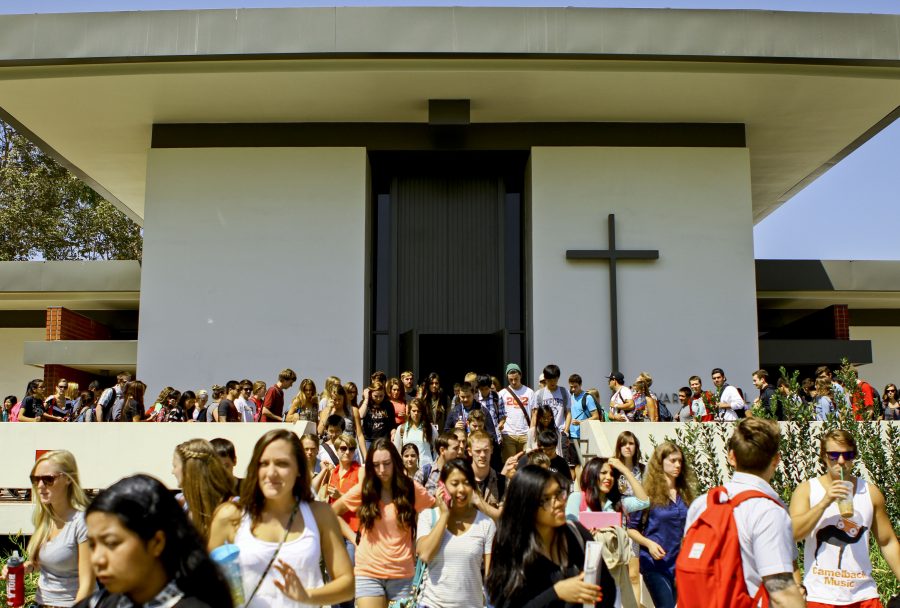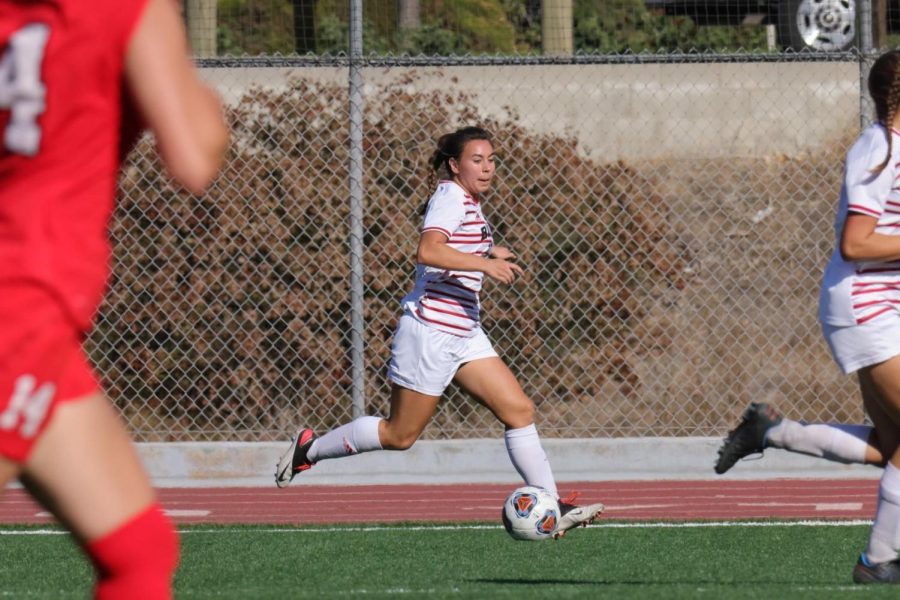During one of Tamra Newman’s first chapels at Biola in 2001, she waited in anticipation for the music to begin, for the drums to start, and the choir to begin singing — but to her surprise, there was none of that.
Learning a new form of worship
Instead, she saw an acoustic guitar in a worship service for the first time, and she realized she was no longer quite in her element. This was Newman’s first step into an entirely different culture of worship than what she was accustomed to.
“I couldn’t identify what was different at first,” Newman explained . She just knew it was not what she was used to.
Worship culture varies from childhood
The acoustic guitar was only the first of many differences she would see between the worship culture at Biola University versus Citizens of Zion, the Los Angeles-based African American church she had grown up in. Her grandfather is currently the pastor there, and her father serves as the minister of music.
A quiet acoustic guitar and a handful of people on stage replaced Citizen of Zion’s joyful, exuberant gospel music, which was always accompanied by a choir, praise team, drums and an organ.
Few were moved toward the Spirit-led dance she loved. She was unfamiliar with the songs by Jeremy Camp and Jars of Clay, whom she had never heard of, replaced them. As she looked around, she felt out of place.
Uncertainty creeps into worship
Throughout her freshman year, Newman struggled with wondering if the way she had always worshipped was wrong. She wondered what was normal and what was even considered worship.
As the year went on, she began to realize that the white evangelical church shaped the Biola culture of worship, and that her black background was a far cry from the university’s “norm.”
She knew that there are different churches within any ethnic group — but to her, the “white” church had been normalized and she was on the outside.
Worship was not the only place Newman encountered differences. Even the messages, although similar, had a different focus. She was used to messages aimed at the heart and the emotions of the individual.
At Biola, no one hollered out an “Amen” or “Hallelujah” in response to a speaker’s profound statement. Instead, the topics focused much more on the mind.
Emphases on aspects of God’s character varied
“At Biola I noticed that there is a value to God as an awesome Creator,” Newman said.
In her African-American culture there is more emphasis on God as your Father. She saw Biola focusing more on the “God of Wonders,” in a more vast sense, than God as a personal Father.
Newman was continually faced with the struggle of knowing which form of worship and thinking about God was correct.
“Through that, I came to realize the power and value of diversity and that, it is bad to have anything in excess,” said Newman.
Learning to love the body
Attending Biola taught her to appreciate different types of worship and different ways to experience God. For example, she learned how to worship quietly.
“You can still feel the love of Christ in different contexts, and we all see different parts of God’s attributes,” said Newman. “It’s about loving the body.”
She finds it important to be humble and not ethnocentric because we are all made in the image of God. Newman worries that this does not always happen at Biola. She thinks that other cultures are seen as “exotic” or “cool” and that is not how it should be.
“You need to know where people come from in order to really know them, and their culture should not be seen as a novelty,” Newman said.
She also said that once people take the time to learn from other cultures, people, and styles of worship, the worship at Biola will be more inclusive. Then it will simply come down to loving God.
Newman, who graduated from Biola in 2005, is now the assistant director of undergraduate admissions in Multi-Ethnic Outreach at Biola.
She still attends the Citizens of Zion church, but now has a greater understanding of different styles of worship, which leads her to a richer view of God, the Father and Creator.






